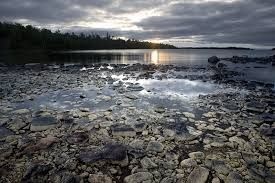
Royal Isle.
The island was a typical chasing ground for local people groups from adjacent Minnesota and Ontario. A kayak voyage of just thirteen miles is important to achieve the island's west end from the territory. In ancient times, huge amounts of copper excavated on Isle Royale and the adjacent Keweenaw Peninsula. Carbon-14 testing of wood stays found in attachments of copper ancient rarities demonstrates that they are no less than 5700 years of age. In Prehistoric Copper Mining in the Lake Superior Region, distributed in 1961, Drier and Du Temple evaluated that in excess of 750,000 tons of copper had been mined from the district. In any case, David Johnson and Susan Martin fight that their evaluation was focused around misrepresented and off base assumptions.
Isle Royale was given to the United States by the 1783 settlement with Great Britain, yet the British stayed in control until after the War of 1812, and the Ojibwa people groups considered the island to be their region. The Ojibwas ceded the island to the U.S. in the 1842 Treaty of La Pointe, with the Grand Portage Band uninformed that not they or Isle Royale was in British region. With the illumination to the Ojibwas of the 1842 Webster–ash Burton Treaty that was marked before the Treaty of La Pointe, the Ojibwas re-attested the 1842 Treaty of La Pointe in the 1844 Isle Royale Agreement, with the Grand Portage Band consenting to the arrangement as an addendum to the 1842 bargain.
In the mid-1840s, Michigan's first state geologist set off a copper explosion, and the first current copper mines were opened on the island. Confirmation of the prior mining exertions was all over the place, as numerous stone sledges, some copper ancient rarities, and spots where copper had been in part worked out of the rock however left set up. The aged pits and trenches prompted the revelation of a considerable lot of the copper stores that were mined in the nineteenth century. The remoteness of the island, joined together with the little veins of copper, brought on the greater part of the nineteenth century mines to fizzle rapidly. Between the diggers and business lumberjacks, a great part of the island was deforested amid the late nineteenth century. When the island turned into a National Park in 1940, logging and other exploitive exercises finished, and the woodland started to recover.



